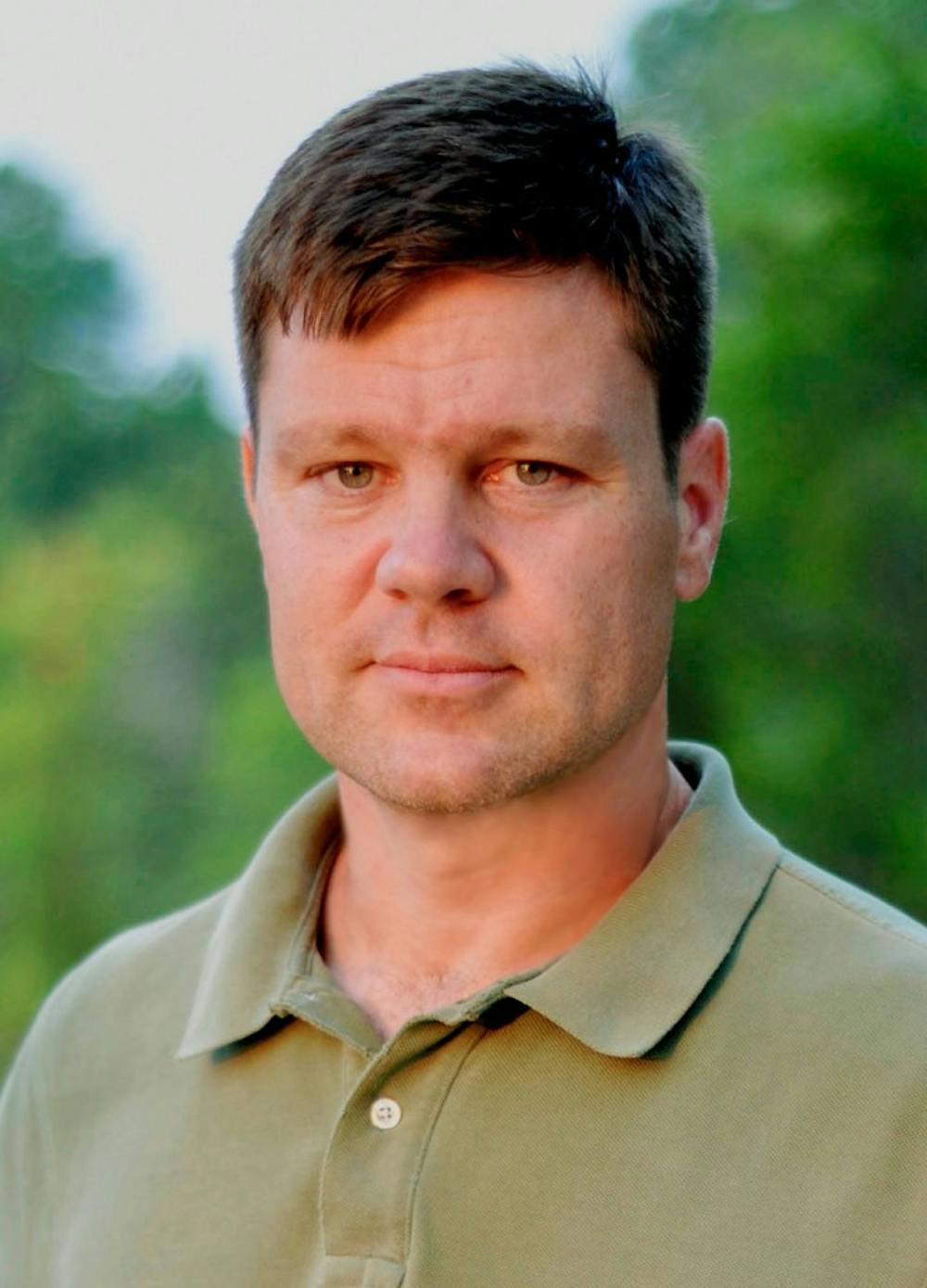Reading from his essay, “Notes from The Imaginary City: On Travel, Privilege, the Visual Image, and Life in Poetry,” Prof. John T. Casteen IV invited listeners to experience his trip to the city of Shanghai.
On Thursday evening in Monroe Hall, Casteen presented his multimedia prose, poetry and photography project on his 2012 trip to Shanghai, China. Casteen is in his second year teaching for the English department. He is the son of John T. Casteen III, who served as president of the University from 1990 to 2010.
Prior to coming to the University, John Casteen IV taught at three Semester at Sea programs, one of which included a short stop in Shanghai. This visit sparked Casteen’s interest in China, which is why he chose to use a summer travel grant to make a return trip.
Part of Casteen’s curiosity with Shanghai can be attributed to his “fascination with places that change rapidly.” In his lecture, Casteen described Shanghai as a complex, dynamic fusion of changed and unchanged parts.
To illustrate this, Casteen described his experiences on Nanjing Road and Beijing Road. Nanjing Road, he explained, is full of neon lights, new high end boutiques selling western brands and “pulsating” energy. One block away is Beijing Road, where Casteen found small family groceries, scrap metal shops and a woman shaving sugarcane with a hatchet.
Each carefully chosen detail and description created a vivid image of his experience. It was evident that Casteen wanted each audience member to be able to picture themselves in his memories of the city.
“The contrast could not be more proximate or more stark,” he explained, “These two streets might as well be in different cities, different neighborhoods [and] different centuries.”
While fascinating, this phenomena made Casteen’s process of capturing the “realness” of Shanghai more complex. To Casteen, Shanghai is simultaneously old and new.
“The new city is like a layer,” he said. “It’s real, and right here in front of us, but laid over the old city, which animates the inner lives of who recall it”.
To Casteen, “The Imaginary City” is the unchanged Shanghai that lives on in the memories of its natives.
He explained that one of the goals of his multimedia project was “to acknowledge that imaginary city, and to define it in terms of the present, the concrete and haze and photorealistic confrontation of the real.”
While he spoke, Casteen flashed photographs from his trip on a slideshow. Though his evocative descriptions in his prose were enough to make audience members feel as though they could picture Shanghai, the accompanying photos of stunning city skylines and people, riding motorbikes, helped make audience members experience the retelling of his travels.
Another factor driving Casteen’s mission to capture the phenomena of “The Imaginary City” comes from his theories about privilege involved with travel. To explain his understanding of privilege, he quoted poet Jaswinder Bolina’s description of it as “the condition of not needing to consider what others are forced to consider.”
Casteen recited the quote with a gentle yet serious tone, making it clear that he wanted it to resonate with audience members.
Prior to his trip, Casteen read multiple Shanghai travel guides that described “must-see” places in China and taught tourists sample phrases, like how to ask for directions. He critiqued how the guides orient travellers towards “a default posture of consumption and self-interest.” To Casteen, the guidebooks lacked any teachings of consideration.
“It defines the experience of the traveler exclusively in terms of his or her own satisfaction of particular expectations, but it never contends with any issues in the lives of the individual people in the country being visited,” he said.
Casteen passionately asserted his insistence that his project “contend(s) with what others are forced to consider.”
He elaborated on the idea of considering the lives of others with an insightful comparison of the traveller to the artist.
“Both parties can only genuinely see what it is they happen to find fascinating,” he explained.
Through his poetry, prose and photographs, Casteen thoughtfully worked to “genuinely see” and be considerate of many parts of Shanghai. He wanted to capture “the texture of the street, the rhythms of people living in a place [he was] only passing through.”
His slideshow included photos that captured conventionally fascinating images, such as a statue of Mao, but also subtle moments, like a handmade broom in a quiet alley. His descriptive stories ranged from tales of “neon” streets to observations of families walking their babies around at night to lull them to sleep. He spoke of each moment, memory and image with great care, making it evident to the audience that he wanted to consider every part of Shanghai.
Casteen’s commitment to seeing Shanghai in its entirety, through the lens of a writer, poet, photographer and through the heart of its people, was greatly inspiring. He proved the power of art to be evocative, sensitive and meaningful. The lecture challenged the surface level idea of how to travel and what it means to experience a new environment. His work would serve as a worthwhile learning experience for any traveller.







